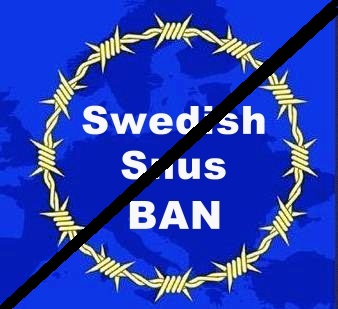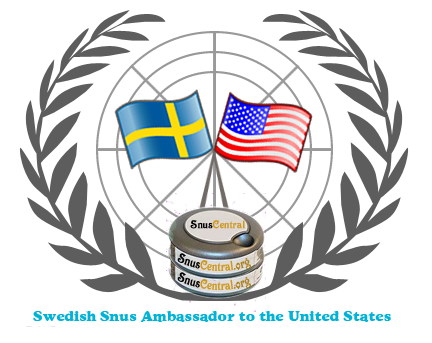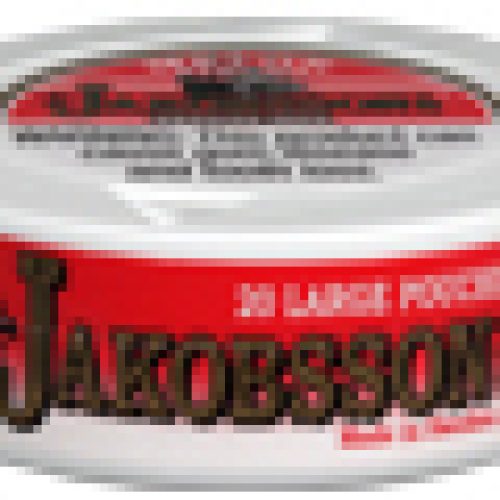New Swedish Strategy for Ending the EU Snus Ban
In Q2 2016 the Swedish government took two major actions concerning Swedish snus. At the time, the first seemed unnecessary and the second only confirmed the weakness of Stockholm when it came to their own free trade interests between Sweden and the EU.
On 1 July 2016 a third snus action was taken, this time not by the Swedish government but by Swedish snus manufacturing giant Swedish Match AB. Looking at all three actions together begs the question: were these coordinated actions by Sweden and Swedish Match to finally eliminate the EU ban on Swedish snus or just an odd coincidence?
The Safety of Swedish Snus
The Swedish National Food Agency, Sweden’s version of the US Food and Drug Administration (FDA), has been responsible for regulating Swedish snus as a food product since 1971. This is important since now considered a food product, Swedish snus manufacturers were forced to adopt the same manufacturing and ingredients quality by which food products were required to achieve.
This led to Swedish snus becoming the least harmful form of oral tobacco in existence. Today, Swedish snus is considered to be 99% less harmful to a smoker than cigarettes are.
It therefore came as somewhat of a shock to me that on 11 Apr the National Food Agency enacted new tougher food product regulations for undesirable substances in Swedish snus.
My first reaction was to ask why? Wasn’t Swedish snus safe enough as it is? Was this just another attempt by government bureaucrats to justify their budgets? After the third snus action occurred in July 2016, I went back and read the April article again and was struck by two paragraphs:
While the previous regulation governing snus/chewing tobacco (LIVSFS 2012:6) only regulated two undesirable substances, namely lead and aflatoxins, the new version also regulates the sum of the TSNA/tobacco-specific nitrosamines (NNN and NNK), and B(a)P.
The National Food Agency has adopted the World Health Organization (WHO) recommended limit values for the sum of NNN and NNK, while the limit values adopted by the National Food Agency for B(a)P are even stricter than those recommended by WHO.
Swedish snus now meets and even exceeded WHO recommended limits for smokeless tobacco and snus.
Sweden Surrenders to new EU-mandated Snus Warning Labels
A little over a month later, the EU’s latest Tobacco Products Directive was implemented in Swedish legislation, which among other things means new health warnings on snus cans. I was outraged at the time. Sweden is the only EU member state which has an exception allowing the sale of Swedish snus.
By adopting the new EU TPD into Swedish law, Sweden was in fact allowing the EU to write domestic Swedish laws which only affected Sweden! At the time I was outraged (as I usually am) by the timidity of the Swedish government when it comes to protecting their own best interests.
Again, after 1 July 2016 I read the warning label article again with a different eye and began wondering if the National Food Agency and Swedish Parliament actions were not part of a bigger plan.
See you in Court: Swedish Match files action to end the EU Swedish Snus Ban!
 This brings us to 1 July 2016; the day Swedish Match AB filed a claim calling on a British court to ask the European Court of Justice (ECJ) to “revisit” the legal grounds of the Swedish snus ban.
This brings us to 1 July 2016; the day Swedish Match AB filed a claim calling on a British court to ask the European Court of Justice (ECJ) to “revisit” the legal grounds of the Swedish snus ban.
“We are asking the UK court to make a reference to the European Court of Justice on the validity of article 17 in the Tobacco Products Directive,” Swedish Match said in an email to Reuters.
Swedish Match said the legal circumstances for the original ban had changed because “novel tobacco products and e-cigarettes” were allowed in TPD-2.
According to Patrik Hildingsson, Vice President of Communications and Public Affairs at Swedish Match AB, “The novelty of snus has been one of the main arguments for not allowing snus on the internal market. That circumstance has now changed,”. Should the British court refer the case to the ECJ, Swedish Match expects a ruling mid-2018 at the earliest, Hildingsson said.
Why file the claim in a British court instead of one in Sweden, you may wonder. In another masterstroke of Sweden’s negotiating skills with the EU, it seems the procedure to make a reference to the ECJ was available to courts in some EU member states…. but not in Sweden.
Another important reason is the reputation and standing of the British courts, according to Solicitor and SnusCENTRAL Contributor Adam Skelland.
In remarks on Snus Nation, Skelland explained that “The UK’s legal system is the de facto choice in international arbitration and litigation. We are the best lawyers in the world which is why so many commercial contracts and agreements have UK arbitration and litigation clauses in them.
Our legal system is totally separate from politics, judges aren’t chosen by politicians and are totally independent, which is in stark contrast to a lot of places. Also UK judges don’t like being told what to do by the EU and ECJ so I think that may have a huge impact on (the Swedish Match claim) since our courts will listen to science and reason. Most other EU courts would just tow the EU line.”
With Brexit pushed back as of now to 2019 at the earliest, the decision of the UK court will still have the same standing as any other EU nation in reference to the ECJ.
Coordinated snus ban attack or coincidence?
Did Swedish Match and the Swedish government coordinate their efforts to give the Swedish Match court claim the best possible case?
With the strictest controls of any smokeless tobacco product already sold in the EU, a stronger warning message, and EU TPD-defined warning labels in place, it will be considerably more difficult for anti-Swedish and anti-Swedish-snus extremists to divert the subject from the validity of Article 17 defining snus as a “novelty product”.
Patrik Hildingsson would know and I would have called him weeks ago for confirmation (or not) of my theory that all this is no coincidence; that is I would have except Patrick and his lovely family are away on holiday camping and doing other fun holiday things. Most of Sweden is on holiday now in fact.
Until his return, I can state confidently that these three anti-snus ban activities were coordinated at the highest levels. I will also take back some of my negative comments concerning the lack of competency of Swedish diplomats….unless Patrick shoots down my theory.
In that event, I will either assume this public/private coordination is so sensitive that he has to deny it or that I read too much into things like this.
The important take-away is no matter how all this came to be, we could very well see the end of the odious EU Snus Ban by 2020! Better two decades late then not at all.
Rejoice EU snusers and smokers soon to be snusers! Your suffering may soon be over.
LARRY WATERS
Swedish Snus Ambassador to the United States
Reporting for SnusCENTRAL.org
About author
You might also like
Camel Snus? Lord, we must Save the Misguided and bring them to Land of Sweden and Your gift that is Swedish Snus!
I was tinkering with The Unloading Zone’s underbelly the other day and ran a report on the Keywords that were bringing my readers here. I was Amazed and Saddened by
Illinois Legeslators Dismiss Smokeless Tobacco Theory
Jan Johnson of CASAA shared an article and video from ABC channel 20 entitled Legislators Dismiss Smokeless Tobacco Theory on the SnusCentral Facebook page. What we have here are rational
Jakobsson’s Snus has FDA Setback and Discontinues 6 Snuses
Swedish Snus manufacturer Gotlandssnus AB, makers of the Jakobssons, Gotlands, and Gotlandssnus brands of snus, suffered a defeat at the hands of the US FDA, a source in Sweden reported.


